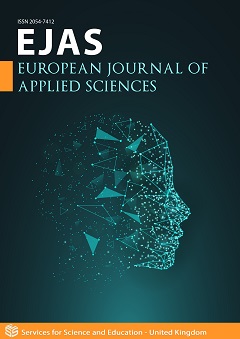Spectroscopic Investigation of the Neuroprotective Effect of Lepidium sativum Water Extract Against 2, 4-Dichlorophenoxyacetic Acid Toxicity on Rat Brain Cerebellum Tissue
DOI:
https://doi.org/10.14738/aivp.1303.18982Keywords:
Fourier transform infrared spectroscopy (FTIR), Antioxidants, Neurotoxicity, Membrane, Protein, herbicide, FT-IR: Fourier Transform Infrared, LS: Lepidium sativum, 2, 4-D: 2, 4-Dichlorophenoxyacetic acid, LD50: Half lethal dose, LDS: Least square difference, HBW: Half band width, ν: vibrational mode, νas: Asymmetric vibrational modeAbstract
FT-IR spectroscopy is a crucial analytical technique used to study complex structures of biological samples. In the present study, FTIR spectroscopy was applied to verify the neuroprotective effect of Lepidium sativum (LS) water extract against the toxicity of 2, 4-Dichlorophenoxyaceticacid in the cerebellar tissue of rat brains. Treated rats were split into four groups; water control group (water with oral gavage), protective group (LS for 4 weeks then a single dose of 2, 4-D LD50), curative group (a single dose of 2, 4-D LD50 then LS for 4 weeks) and LS only group (LS for 4 weeks), a minimum of 5 rats in each group. The group treated with LS alone exhibited a clear recovery from the significant decrease in the protein content after 2, 4-D intoxication, expressed at the amide I band centered at ~1645cm-1. Additionally, significant improvements were observed in the alterations of the secondary protein structure in 2, 4-D intoxicated groups treated with LS extract. Furthermore, notable changes were detected in the looseness of membrane lipid chain packing, lipid polarity and/or a significant rise in the formation of lipids hydroperoxyl groups and carbonyl compounds. However, this effect in the protective group was not as significant as the curative and LS only groups. To conclude, this study demonstrates that LS water extract has a significant potency as an antitoxic/antioxidant effect against neurotoxicity induced by 2, 4-D. Moreover, FT-IR spectroscopy has proven to be rapid and sensitive in toxicity monitoring as well as treatment in biological membranes.
Downloads
Published
How to Cite
Issue
Section
License
Copyright (c) 2025 Tahani H. Dakhakhni, Gehan Ahmed, Dalal A. Albaroudi

This work is licensed under a Creative Commons Attribution 4.0 International License.






